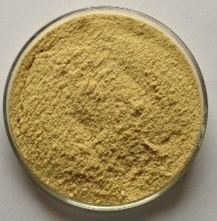
Cassia Polymers – Application in Conditioning Shampoo
Cassia gum is a naturally occurring, vegetable-based carbohydrate. Comprising of at least 75% polysaccharide, cassia gum is primarily a galactomannan having mannose and galactose ratio of 5:1. It is grown extensively in tropical zones and has been used for a long time in Ayurvedic medications. Cassia is also used in Chinese medications for treating a number of diseases, such as- skin ailments, indigestion, and pain. Apart from its medicinal applications, it is also preferred for use as a gelling agent in pet and human food applications.
Cassia Gum properties
Cassia gum powder has a unique structure and it can be modified to generate cationic galactomannans with higher levels of cationic substitution. This modification produces 2 new cationic cassia conditioning polymers, namely-cassia hydroxypropyltrimonium chloride with significant cationic charge density. The presence of higher charge levels in cationic cassia polymers leads to the formation of coacervate. This coacervate is formed during shampoo dilution in the form of a non-soluble complex. The surfactant formulations with cationic cassia polymers exhibit a higher level of coacervate formation as compared to other polymers.
Summary: Cassia gum has a unique structure and is modified to produce cationic galactomannans with higher levels of cationic substitution. This modification leads to the generation of cassia polymers having significant cationic charge density.
Cassia Polymer
The cassia polymer is a naturally derived and multifunctional polymer that helps in efficient silicon deposition. It also imparts a different sensory experience and improved conditioning performance in hair cleansing. Apart from being used to produce shampoos, the polymers made from cassia gum are also used in the formulation of other products as well, such as- Body washes, shower gels, facial cleansers, hair mousses, styling crèmes, and lotions.
Cassia gum as an efficient Conditioning Polymer
Conditioning shampoos are always considered as an interesting prospect since it offers the convenience of cleansing and conditioning in a single step. The formulation of this product, though, is a bit complex due to contrasting mechanisms. The shampoo must be designed in a manner that it removes and solubilizes the soil and at the same time deposits conditioning ingredients. This is achieved by coacervation. The anionic surfactants and cationic conditioning polymers have the ability to be formulated together to produce a stable shampoo structure. The polymers made from cassia gum have excellent coacervate formation ability and thus aids in producing such shampoos.
The main function of cationic conditioning polymers is to improve the amount of silicone that gets deposited on the hair during the shampoo cycle. These silicones improve the hair feel, shine, and manageability. Cassia polymers leads to an increased coacervate formation that eventually aids in effective deposition of silicone and other ingredients into the hair fibers.
Additionally, the cationic cassia polymers also ease the combing and improve the feel & detangling of hair in both the wet and dry stage. As compared to other usual polymers, cassia gum derived polymers are much more effective in providing such experiences.
Summary: Cassia polymer is a naturally derived polymer and is used to produce conditioning shampoos. The cassia polymers are considered to be a better alternative than other polymers as they exhibit a higher level of coacervate formation. The coacervation leads to better deposition of conditioner ingredients.


